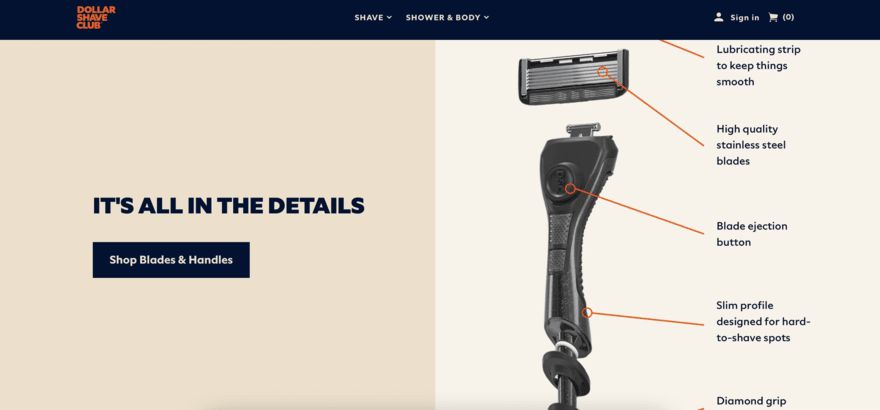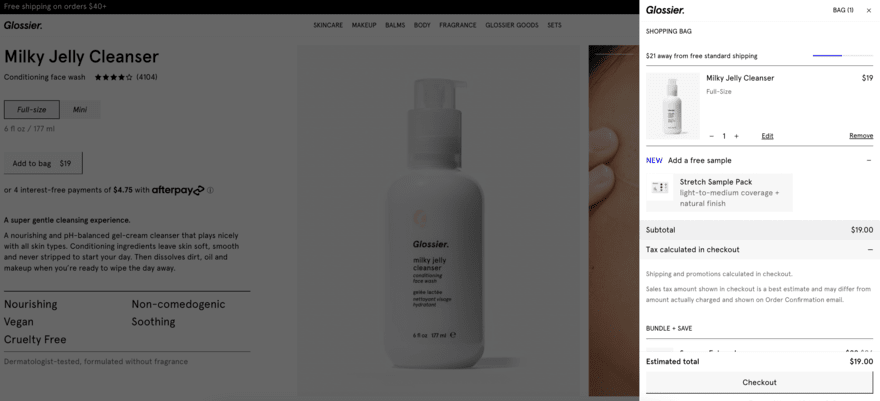Your 15-Point Conversion Rate Optimization Checklist for 2023
Our independent research projects and impartial reviews are funded in part by affiliate commissions, at no extra cost to our readers. Learn more
Whether you build your website using a website builder or an alternative platform, following a conversion rate optimization checklist is essential for all online businesses.
While many online business owners focus on driving traffic to their websites, boosting conversion rates can often be overlooked until it’s too late.
Once you’ve built your website and got users to visit it, how do you convince them to convert?
This 15-point checklist covers all the conversion rate optimization basics as well as more in-depth optimization tips, so you can convert idle visitors into active customers.
#1 Understand Conversion Rate Optimization
Conversion rate optimization (CRO) is the process of improving your website to make it easier for website visitors to perform your desired actions.
These actions, known as conversions, can be anything from making a purchase to signing up for your email list.
Conversion rate optimization allows you to understand the behaviors and desires of your audience, meaning you can offer the very best experience. And of course, CRO also leads to business growth and success.
As part of your conversion rate optimization, there are various different metrics you can measure depending on your end goals. These include:
- Website sessions
- Pageviews
- Clicks
- Traffic sources
- Bounce rate
- Value per visit
#2 Set Clear Conversion Goals
Define specific, measurable, and relevant conversion rate goals for your website.
Your conversion goals should be specific and align with your wider business objectives.
For example, if one of your main business objectives is to be known as a thought leader in your industry, one of your key conversion goals may be to increase the number of downloads of your long-form content.
You should also set a realistic timeframe for achieving your goals. We may all want results overnight but be realistic about how long you think it will take to optimize your website, drive traffic, and increase your conversions rate.
#3 Analyze Your Website
Once you’re clear on exactly what it is you want to achieve, you need to understand how your website is currently performing in relation to your goals.
Some of the main areas to consider when undertaking a CRO audit include page load speed, mobile friendliness, and user navigation.
Identify pain points and areas that need improvement in order for you to create an action plan of what needs to be done.
#4 Think User-Centric Design
The key to getting conversions lies with your users. After all, it’s them who are going to convert.
You, therefore, need to ensure the design of your website focuses on users, what they want, and how they behave.
By enhancing both the UI (user interface) and UX (user experience), you’ll be providing the perfect foundation for conversions.
Think about both the aesthetic aspects of your web design, such as colors and layouts, as well as the more functional elements e.g. navigation.
Consider conducting user research to understand which areas of design your site may be lacking in.
#5 Craft Compelling Calls To Action
If you want a user to take action on your website, you need to tell them.
Using a clear and compelling call to action (CTAs) will help guide users through their journey with your online business, encouraging them to take specific actions at specific times.
Think carefully about where you place CTAs on your website. For example, a “Get More Information” CTA is likely to come before “Make Your Booking” in the user’s journey.

#6 Test and Experiment
The reality is that until you implement something on your website, you don’t know exactly how well it will perform. That’s why you need to test, test, test.
For example, you may decide to try multiple different CTAs to see which gets the best results or try out two different checkout processes to determine which results in the most sales.
You can use those key CRO metrics we spoke about earlier in step one to help you evaluate what’s working and what isn’t.
#7 Optimize Landing Pages
You need to look at each individual landing page on your website and ensure each is fully optimized for the best conversion rate results.
While each page will likely need slightly different elements, some of the key components of high-converting landing pages that you should look to include are:
- Engaging headlines and subheadings
- Persuasive imagery and visuals
- Informative copy
- Streamlined forms and navigation
- Clear user pathway
Find Out More
Check out our guide to optimizing your product pages for all the tips and tricks you need to ensure your product pages are up to scratch.
#8 Streamline the Checkout Process
The last thing you want is for your customers to back out at the final step so optimizing your checkout page for conversions is a must.
The key here is to make the checkout process as simple and streamlined as possible. Minimize the steps required and keep form fields to a minimum.

For the best chance of customers completing their purchases be sure to offer multiple payment options and offer guest checkout. Try to predict the reasons that a customer may abandon their purchase on the checkout page and offer a solution to prevent it.
#9 Build Trust and Credibility
If you want users to convert then they need to trust your brand, and one of the best ways to build trust in your website is to get previous customers to sing your praises.
No, we aren’t suggesting you ask previous customers to start cold calling your users, instead you can add testimonials and reviews from people who rate your brand highly.
You can also put together longer case studies and success stories for customers who may need more persuasion.
If you’ve achieved any certifications or industry qualifications, be sure to display these on your website as well as any relevant professional affiliations or partnerships.
Put yourself in the user’s shoes. What do you look for when deciding to put your trust in a brand?
#10 Personalize and Customize
Not every user will respond in the same way to the same website features which is where personalization comes in.
Tailored user experiences ensure you’re giving yourself the very best chance of converting website visitors.
Utilize your intel on your user’s behavior to provide a personalized experience such as via bespoke product recommendations or personalized communications.
A personalized shopping experience makes users feel valued and special, which in turn makes them considerably more inclined to convert.
#11 Prioritize Website Performance and Loading Speed
How your website performs technically can have a huge impact on your conversion rates.
Slow-loading websites are off-putting to users and people won’t hang around for a page to load, they’ll leave and find an alternative.
So how can you make sure your website is loading as fast as possible? Our top three page load speed tips are:
- Optimize all images and multimedia for the web. Make sure your file sizes aren’t too big.
- Minimize your server response times and delays.
- Leverage a Content Delivery Network (CDN).
If you’re interested in how load speeds can affect your website’s performance, check out our article Website Load Time Statistics for all the most recent load speed insights.
#12 Utilize High-Quality Visuals
Visuals such as images and videos are the ideal way of catching the attention of users.
If a user lands on a webpage and is met with streams of text and no visuals, chances are they’re going to leave.
Too much text is overwhelming whereas visuals are engaging, and fun, and make the overall experience more enjoyable.
Make sure to use high-quality, optimized images throughout your website that align with your brand style as part of your conversion rate optimization.
#13 Implement Social Proof
We’re big fans of adding social proof to your website and it’s a key part of CRO.
Social proof allows you to build trust in your brand because users can see that you’re legitimate and that other people are following and engaging with you online.
Some of the best ways you can add social proof to your website to boost conversions include:
- Display user-generated content (UGC)
- Showcase customer reviews and ratings
- Highlight influencer endorsements and partnerships – this is just one way influencers can help you drive sales
Find Out More
Check out our list of 10 Social Proof Examples to help drive conversions on your site.
#14 Enhance Mobile Experience
More people than ever before are browsing the internet on mobile devices therefore if you want users to convert, your website needs to be optimized for mobile and have a mobile-first design.
A responsive and adaptive layout and design should be the first thing you consider when building a website.
By streamlining your navigation and the number of interactions a user has to complete before they convert, you’ll be ensuring that your mobile experience isn’t preventing users from converting.
#15 Monitor Continuously
The final step on our conversion rate optimization checklist is to continuously monitor your performance.
Use an analytics tool such as Google Analytics to monitor your conversion rates, analyze user behavior, and identify both trends and areas for improvement. (If you don’t already have it, you can find out how to add Google Analytics to your site in our full guide).
The only way to be sure that all the other steps you’ve implemented are working is to keep a close eye on your stats.
Conversion Rate Optimisation Checklist: Summary
Conversion rate optimization is an essential practice for online businesses to improve websites, generate more leads, and boost your conversion rates.
This list of 15 steps forms the perfect foundation for any online business owner looking to improve conversion rates but remember, the online world is always changing so be sure to keep on top of all the latest trends and track your user behaviors to ensure you’re meeting user needs.
To recap, our 15-point checklist of conversion rate optimization basics is:
- Understand Conversion Rates
- Set Clear Conversion Goals
- Analyze Your Website
- Think User-Centric Design
- Craft Compelling Calls to Action
- Test and Experiment
- Optimize Landing Pages
- Streamline the Checkout Process
- Build Trust and Credibility
- Personalize and Customize
- Prioritize Website Performance
- Utilize High-Quality Visuals
- Implement Social Proof
- Enhance Mobile Experience
- Monitor Continuously
Ready for more conversion rate tips and tricks? Check out our 10 ways to increase conversion rates article next!
Leave a comment